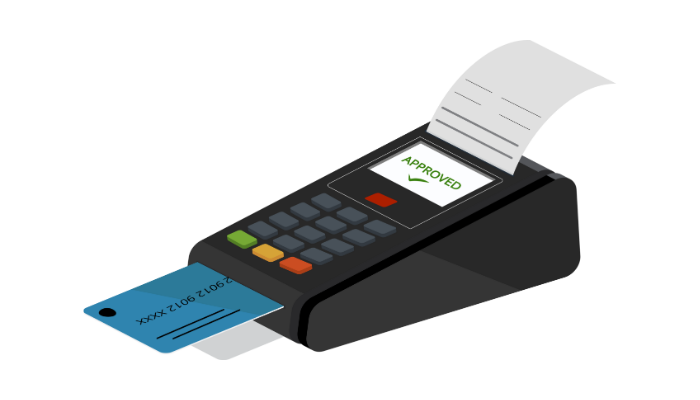EMV technology has made credit card payments much more secure. Storing cardholder data on an embedded chip (rather than a magnetic stripe) has proven highly effective in reducing counterfeit fraud. Because EMV cards generate unique transaction data for each purchase, it is even more challenging for fraudsters to replicate or misuse card information. In fact, these security measures have become so effective that merchants will automatically lose any chargeback that a customer files if the merchant does not correctly process the chip card as an EMV transaction.

Who is Responsible for a Fraudulent EMV Card Transaction?
Before EMV cards, the liability for fraudulent transactions usually fell on banks or credit card issuers. After the shift, however, this liability moved to whichever party had the least secure technology in place. If a merchant hadn’t upgraded to EMV-compatible terminals, they would bear the responsibility for certain fraudulent transactions. This remains the rule today.
Today, essentially all of the credit card terminals on the market are EMV-compatible. However, there are several instances where a merchant may still process a chip card improperly, treating it as a non-chip card instead. as though it weren’t a chip card. For instance, they may swipe the card’s magnetic strip if their terminal is having technical issues processing a scratched chip, or they may key the card number in to a virtual terminal instead of inserting the card into their point-of-sale system. These fallback processing methods can leave the merchant liable for a chargeback.
This may not seem like the end of the world for merchants with a low average order value – but when a merchant’s typical transaction size reaches four or even five figures, preventing these losses becomes even more critical.
Reducing EMV Chargeback Liability
To minimize EMV chargeback liability, merchants must make sure to:
- Upgrade their payment terminals to EMV-compatible ones (if they have not done so already) to comply with hardware requirements.
- Properly train their employees on chip card processing procedures to reduce fallback scenarios. Chip cards should only be swiped through a terminal or entered manually as an absolute last resort.
- Maintain thorough records for each transaction. If a chargeback is filed, having comprehensive documentation that the EMV card was processed correctly can serve as evidence in the merchant’s favor. It’s not a fool-proof way to guarantee that the merchant will win their chargeback, but it’s the first step in the right direction.
Discover Secure, Reliable EMV Processing Technologies
Curbstone’s credit card processing solutions make it simple to process EMV transactions. With chip-enabled terminals that integrate directly with your back-end systems, you can securely process card-present transactions and tie the records back to the other applications you run on your IBM i. In the event of a chargeback, you can easily access the documentation you need to support your defense. Most importantly, the Curbstone team will be there to update you on best practices along the way – both now and as credit card processing regulations continue to evolve.
Interested in learning more? Contact us today for more information.

